Black And Decker BDG1400 Handleiding
Black And Decker
Boormachine
BDG1400
Bekijk gratis de handleiding van Black And Decker BDG1400 (6 pagina’s), behorend tot de categorie Boormachine. Deze gids werd als nuttig beoordeeld door 41 mensen en kreeg gemiddeld 4.5 sterren uit 21 reviews. Heb je een vraag over Black And Decker BDG1400 of wil je andere gebruikers van dit product iets vragen? Stel een vraag
Pagina 1/6

General Safety Rules
WARNING: Read and understand all instructions. Failure to follow all instructions listed
below may result in electric shock, fire and/or serious personal injury.
SAVE THESE INSTRUCTIONS
Work Area
•Keep your work area clean and well lit. Cluttered benches and dark areas invite
accidents.
•Do not operate power tools in explosive atmospheres, such as in the presence of
flammable liquids, gases, or dust. Power tools create sparks which may ignite the dust or
fumes. Use in well ventilated areas only.
•Keep bystanders, children, and visitors away while operating a power tool.
Distractions can cause you to lose control.
Electrical Safety
•Do not abuse the cord. Never use the cord to carry the tools or pull the plug from an
outlet. Keep cord away from heat, oil, sharp edges or moving parts. Replace
damaged cords immediately. Damaged cords increase the risk of electric shock.
•A battery operated tool with integral batteries or a separate battery pack must be
recharged only with the specified charger for the battery. A charger that may be
suitable for one type of battery may create a risk of fire when used with another battery.
•Use battery operated tool only with specifically designated battery pack. Use of any
other batteries may create a risk of fire.
Personal Safety
•Stay alert, watch what you are doing and use common sense when operating a power
tool. Do not use tool while tired or under the influence of drugs, alcohol, or
medication. A moment of inattention while operating power tools may result in serious
personal injury.
•Dress properly. Do not wear loose clothing or jewelry. Contain long hair. Keep your
hair, clothing, and gloves away from moving parts. Loose clothing, jewelry, or long hair
can be caught in moving parts. Air vents cover moving parts and should be avoided.
•Avoid accidental starting. Be sure switch is off before plugging in. Carrying tools with
your finger on the switch or plugging in tools that have the switch on invites accidents.
•Remove adjusting keys or wrenches before turning the tool on. A wrench or key that is
left attached to a rotating part of the tool may result in personal injury.
•Do not overreach. Keep proper footing and balance at all times. Proper footing and
balance enables better control of the tool in unexpected situations.
•Use safety equipment. Always wear eye protection. Dust mask, non-skid safety shoes,
hard hat, or hearing protection must be used for appropriate conditions.
Tool Use and Care
•Use clamps or other practical way to secure and support the workpiece to a stable
platform. Holding the work by hand or against your body is unstable and may lead to loss
of control.
•Do not force tool. Use the correct tool for your application. The correct tool will do the
job better and safer at the rate for which it is designed.
•Do not use tool if switch does not turn it on or off. Any tool that cannot be controlled
with the switch is dangerous and must be repaired.
•Disconnect the plug from the power source before making any adjustments,
changing accessories, or storing the tool. Such preventative safety measures reduce
the risk of starting the tool accidentally.
•Store idle tools out of reach of children and other untrained persons. Tools are
dangerous in the hands of untrained users.
•Maintain tools with care. Keep cutting tools sharp and clean. Properly maintained
tools, with sharp cutting edges are less likely to bind and are easier to control.
•Check for misalignment or binding of moving parts, breakage of parts, and any
other condition that may affect the tools operation. If damaged, have the tool
serviced before using. Many accidents are caused by poorly maintained tools.
•Use only accessories that are recommended by the manufacturer for your model.
Accessories that may be suitable for one tool, may become hazardous when used on
another tool.
CONSERVEZ CE MODE D'EMPLOI POUR UN USAGE
ULTÉRIEUR.
CONSERVE ESTE MANUAL PARA FUTURAS
CONSULTAS.
SAVE THIS MANUAL FOR FUTURE
REFERENCE.
GUIDE D'UTILISATION MANUAL DE INSTRUCCIONES
INSTRUCTIVO DE OPERACIÓN, CENTROS DE SERVICIO Y
PÓLIZA DE GARANTÍA. ADVERTENCIA: LÉASE ESTE
INSTRUCTIVO ANTES DE USAR EL PRODUCTO.
INSTRUCTION MANUAL
Catalog Nos. BDG1200, BDG1400
1
1
1
1
1
1
1
1
1
12
2
2
2
2
2
2
2
2
2
&
&
&
&
&
&
&
&
&
&
1
1
1
1
1
1
1
1
1
14
4
4
4
4
4
4
4
4
4.
.
.
.
.
.
.
.
.
.4
4
4
4
4
4
4
4
4
4
V
V
V
V
V
V
V
V
V
Vo
o
o
o
o
o
o
o
o
ol
l
l
l
l
l
l
l
l
lt
t
t
t
t
t
t
t
t
t
C
C
C
C
C
C
C
C
C
Co
o
o
o
o
o
o
o
o
or
r
r
r
r
r
r
r
r
rd
d
d
d
d
d
d
d
d
dl
l
l
l
l
l
l
l
l
le
e
e
e
e
e
e
e
e
es
s
s
s
s
s
s
s
s
ss
s
s
s
s
s
s
s
s
s
D
D
D
D
D
D
D
D
D
Dr
r
r
r
r
r
r
r
r
ri
i
i
i
i
i
i
i
i
il
l
l
l
l
l
l
l
l
ll
l
l
l
l
l
l
l
l
ls
s
s
s
s
s
s
s
s
s
Cat. #’s BDG1200, BDG1400 Form # 5145557-03 (MAR. ‘05)
Copyright © 2005 Black & Decker Printed in China
•When battery pack is not in use, keep it away from other metal objects like: paper
clips, coins, keys, nails, screws, or other small metal objects that can make a
connection from one terminal to another. Shorting the battery terminals together may
cause sparks, burns, or a fire.
Service
•Tool service must be performed only by qualified repair personnel. Service or
maintenance performed by unqualified personnel could result in a risk of injury.
•When servicing a tool, use only identical replacement parts. Follow instructions in
the Maintenance section of this manual. Use of unauthorized parts or failure to follow
Maintenance Instructions may create a risk of electric shock or injury.
Specific Safety Rules
•Hold tool by insulated gripping surfaces when performing an operation where the
cutting tool may contact hidden wiring or its own cord. Contact with a "live" wire will
make exposed metal parts of the tool "live" and shock the operator.
•When working on a ladder or on scaffolding be sure to lay the tool down on its side
when not in use. Some tools with large battery packs will stand upright but may be easily
knocked over.
WARNING: Some dust created by power sanding, sawing, grinding, drilling, and
other construction activities contains chemicals known to cause cancer, birth
defects or other reproductive harm. Some examples of these chemicals are:
• lead from lead-based paints,
• crystalline silica from bricks and cement and other masonry products, and
• arsenic and chromium from chemically-treated lumber. (CCA)
Your risk from these exposures varies, depending on how often you do this type of work. To
reduce your exposure to these chemicals: work in a well ventilated area, and work with
approved safety equipment, such as those dust masks that are specially designed to filter
out microscopic particles.
The label on your tool may include the following symbols.
V ..........................volts A..........................amperes
Hz ........................hertz W ........................watts
min ........................minutes ......................alternating current
......................direct current no ........................no load speed
..........................Class II Construction
........................
earthing terminal
........................safety alert symbol .../min ..................revolutions or
reciprocations
per minute
Before operating this tool, carefully read and understand all instructions in the “Important
Safety Instructions” section.
BATTERY CAP INFORMATION
Battery storage and carrying caps are provided for use whenever the battery is out of the
tool or charger. Remove cap before placing battery in charger or tool.
WARNING: Do not
store or carry battery so
that metal objects can
contact exposed battery
terminals. For example,
do not place battery in
aprons, pockets, tool
boxes, product kit
boxes, drawers, etc.
with loose nails, screws,
keys, etc. without
battery cap.
Transporting batteries can possibly cause fires if the battery terminals inadvertently come in
contact with conductive materials such as keys, coins, hand tools and the like. The US
Department of Transportation Hazardous Material Regulations (HMR) actually prohibit
transporting batteries in commerce or on airplanes (i.e. packed in suitcases and carryon
luggage) UNLESS they are properly protected from short circuits. So when transporting
individual batteries, make sure that the battery terminals are protected and well insulated
from materials that could contact them and cause a short circuit."
FIRST AID MEASURES FOR GEL COMPONENTS
If gel within the comfort grip becomes exposed and results in skin contact wash with soap
and water;
For eye contact, flush with flowing water. If swallowed, seek medical attention.
Material Safety Data Sheet (MSDS) available from 1-800-544-6986
34
1 2
Trigger Switch
Interrupteur à détente
Gatillo interruptor
Depress for reverse (this side)
Enfoncer pour la marche arrière
Oprima para marcha hacia adelante
Depress for forward (other side)
Enfoncer pour la marche avant
Oprima para reversa
Drill Bit Icon
Symbole d’une mèche de
perceuse
Icono de broca
Torque Adjust Collar
collier de réglage du couple
collarÍn de ajuste de par (torque)
BEFORE RETURNING THIS PRODUCT
FOR ANY REASON PLEASE CALL
1-800-54-HOW-TO (544-6986)
IF YOU SHOULD EXPERIENCE A PROBLEM
WITH YOUR BLACK & DECKER PRODUCT,
C
C
C
C
CA
A
A
A
AL
L
L
L
LL
L
L
L
L
1
1
1
1
1-
-
-
-
-8
8
8
8
80
0
0
0
00
0
0
0
0-
-
-
-
-5
5
5
5
54
4
4
4
4-
-
-
-
-H
H
H
H
HO
O
O
O
OW
W
W
W
W-
-
-
-
-T
T
T
T
TO
O
O
O
O
(
(
(
(
(5
5
5
5
54
4
4
4
44
4
4
4
4-
-
-
-
-6
6
6
6
69
9
9
9
98
8
8
8
86
6
6
6
6)
)
)
)
)
BEFORE YOU CALL, HAVE THE FOLLOWING INFORMATION AVAILABLE, CATALOG No., TYPE No., AND
DATE CODE (e.g. 20000130M). IN MOST CASES, A REPRESENTATIVE CANBLACK & DECKER
RESOLVE YOUR PROBLEM OVER THE PHONE. IF YOU HAVE ASUGGESTION OR COMMENT, GIVE
US A CALL. YOUR FEEDBACK IS VITALTO BLACK & DECKER.
K
K
K
K
K
K
K
K
K
KE
E
E
E
E
E
E
E
E
EY
Y
Y
Y
Y
Y
Y
Y
Y
YI
I
I
I
I
I
I
I
I
IN
N
N
N
N
N
N
N
N
NF
F
F
F
F
F
F
F
F
FO
O
O
O
O
O
O
O
O
OR
R
R
R
R
R
R
R
R
RM
M
M
M
M
M
M
M
M
MA
A
A
A
A
A
A
A
A
AT
T
T
T
T
T
T
T
T
TI
I
I
I
I
I
I
I
I
IO
O
O
O
O
O
O
O
O
ON
N
N
N
N
N
N
N
N
NY
Y
Y
Y
Y
Y
Y
Y
Y
YO
O
O
O
O
O
O
O
O
OU
U
U
U
U
U
U
U
U
US
S
S
S
S
S
S
S
S
SH
H
H
H
H
H
H
H
H
HO
O
O
O
O
O
O
O
O
OU
U
U
U
U
U
U
U
U
UL
L
L
L
L
L
L
L
L
LD
D
D
D
D
D
D
D
D
DK
K
K
K
K
K
K
K
K
KN
N
N
N
N
N
N
N
N
NO
O
O
O
O
O
O
O
O
OW
W
W
W
W
W
W
W
W
W:
:
:
:
:
:
:
:
:
:.
• Charge battery for 9 hours before first use. For more information see
“CHARGING THE POWER PACK”.
Battery Cap

ON BOARD BIT STORAGE
A bit storage slot is built-in to the area just above the battery.
DRILLING
• Use sharp drill bits only.
• Support and secure work properly, as instructed in the Safety Instructions.
• Use appropriate and required safety equipment, as instructed in the Safety Instructions.
• Secure and maintain work area, as instructed in the Safety Instructions.
• Run the drill very slowly, using light pressure, until the hole is started enough to keep the
drill bit from slipping out of it.
• Apply pressure in a straight line with the bit. Use enough pressure to keep the bit biting
but not so much as to stall the motor or deflect the bit.
• Hold the drill firmly with two hands to control its twisting action.
• DO NOT CLICK THE TRIGGER OF A STALLED DRILL OFF AND ON IN AN ATTEMPT
TO START IT. DAMAGE TO THE DRILL CAN RESULT.
• Minimize stalling on breakthrough by reducing pressure and slowly drilling through the
last part of the hole.
• Keep the motor running while pulling the bit out of a drilled hole. This will help reduce
jamming.
• Use a cutting lubricant when drilling metals. The exceptions are cast iron and brass which
should be drilled dry. The lubricants that work best are sulphurised cutting oil or lard oil.
• When using twist drill bits to drill holes in wood, it will be necessary to pull the bits out
frequently to clear chips from the flutes.
•Make sure switch turns drill on and off.
WARNING: It is important to support the work properly and to hold the drill firmly to
prevent loss of control which could cause personal injury. If you have any questions on how
to properly operate tool, call: 1-800-54-HOW-TO (544-6986).
DRILLING IN WOOD
Holes in wood can be made with the same twist drill bits used for metal or with spade bits.
These bits should be sharp and should be pulled out frequently when drilling to clear chips
from the flutes.
DRILLING IN METAL
Use a cutting lubricant when drilling metals. The exceptions are cast iron and brass which
should be drilled dry. The cutting lubricants that work best are sulfurized cutting oil or lard
oil.
DRILLING IN MASONRY
Use carbide tipped masonry bits. Refer to Drilling section. Keep even force on the drill but
not so much that you crack the brittle material. A smooth, even flow of dust indicates the
proper drilling rate.
Maintenance
Use only mild soap and damp cloth to clean the tool. Never let any liquid get inside the tool;
never immerse any part of the tool into a liquid.
IMPORTANT: To assure product SAFETY and RELIABILITY, repairs, maintenance and
adjustment (other than those listed in this manual) should be performed by authorized
service centers or other qualified service organizations, always using identical replacement
parts.
The RBRC™ Seal
The RBRC™ (Rechargeable Battery Recycling Corporation)
Seal on the nickel-cadmium battery (or battery pack) indicates that the costs to
recycle the battery (or battery pack) at the end of its useful life have already been paid by
Black & Decker. In some areas, it is illegal to place spent nickel-cadmium batteries in the
trash or municipal solid waste stream and the RBRC program provides an environmentally
conscious alternative.
RBRC in cooperation with Black & Decker and other battery users, has established
programs in the United States and Canada to facilitate the collection of spent nickel-
cadmium batteries. Help protect our environment and conserve natural resources by
returning the spent nickel-cadmium battery to an authorized Black & Decker service center
or to your local retailer for recycling. You may also contact your local recycling center for
information on where to drop off the spent battery, or call 1-800-8-BATTERY.
Accessories
Recommended accessories for use with your tool are available from your local dealer or
authorized service center. If you need assistance regarding accessories, please call:
1-800-54-HOW-TO (544-6986).
WARNING: The use of any accessory not recommended for use with this tool could
be hazardous.
The following accessories should be used only in the sizes specified below:
BITS, METAL DRILLING – Up to 3/8" (9.5mm); BITS, MASONRY DRILLING – Up to 3/8"
(9.5mm); WOOD DRILLING – Up to 1/2" (12.7mm).
Service Information
All Black & Decker Service Centers are staffed with trained personnel to provide customers
with efficient and reliable power tool service. Whether you need technical advice, repair, or
genuine factory replacement parts, contact the Black & Decker location nearest you. To find
your local service location, refer to the yellow page directory under "Tools—Electric" or call:
1-800-54-HOW TO. (544-6986)
Full Two-Year Home Use Warranty
Black & Decker (U.S.) Inc. warrants this product for two years against any defects in
material or workmanship. The defective product will be replaced or repaired at no charge in
either of two ways.
The first, which will result in exchanges only, is to return the product to the retailer from
whom it was purchased (provided that the store is a participating retailer). Returns should
be made within the time period of the retailer’s policy for exchanges (usually 30 to 90 days
after the sale). Proof of purchase may be required. Please check with the retailer for their
specific return policy regarding returns that are beyond the time set for exchanges.
The second option is to take or send the product (prepaid) to a Black & Decker owned or
authorized Service Center for repair or replacement at our option. Proof of purchase may
be required. Black & Decker owned and authorized Service Centers are listed under
"Tools-Electric" in the yellow pages of the phone directory.
This warranty does not apply to accessories. This warranty gives you specific legal rights
and you may have other rights which vary from state to state. Should you have any
questions, contact the manager of your nearest Black & Decker Service Center.
This product is not intended for commercial use.
Free Warning Label Replacement: If your warning labels become illegible or are
missing, call for a free replacement.1-800-544-6986
SAFETY WARNINGS AND INSTRUCTIONS: CHARGING
1. This manual contains important safety and operating instructions.
2. Before using battery charger, read all instructions and cautionary markings on (1)
battery charger, (2) battery, and (3) product using battery.
3. CAUTION: To reduce the risk of injury, charge only Black & Decker Batteries. Other
types of batteries may burst causing personal injury and damage.
4. Do not expose charger to rain or snow.
5. Use of an attachment not recommended or sold by Black & Decker may result in a risk
of fire, electric shock, or injury to persons.
6. To reduce risk of damage to electric plug and cord, pull by plug rather than cord when
disconnecting charger.
7. Make sure cord is located so that it will not be stepped on, tripped over, or otherwise
subjected to damage or stress.
8. An extension cord should not be used unless absolutely necessary. Use of improper
extension cord could result in a risk of fire, electric shock or electrocution.
a. Two-wire cords can be used with 2-wire or 3-wire extension cords. Only round
jacketed extension cords should be used, and we recommend that they be listed by
Underwriters Laboratories (U.L.). If the extension is to be used outside, the cord must
be suitable for outdoor use. Any cord marked for outdoor use can also be used for
indoor work. The letters "W" or "WA" on the cord jacket indicate that the cord is
suitable for outdoor use.
b. An extension cord must have adequate wire size (AWG or American Wire Gauge) for
safety, and to prevent loss of power and overheating. The smaller the gauge number
of the wire, the greater the capacity of the cable; that is, 16 gauge has more capacity
than 18 gauge. When using more than one extension to make up the total length, be
sure each extension contains at least the minimum wire size.
CHART FOR MINIMUM WIRE SIZE (AWG)OF EXTENSION CORDS
NAMEPLATE RATING AMPS – 0 – 10.0
Total Extension Cord Length (ft) 25 50 75 100 125 150
Wire Gauge 18 18 16 16 14 14
9. Use only the supplied charger when charging. The use of any other charger could
damage the battery or create a hazardous condition.
10. Use only one charger when charging.
11. Do not attempt to open the charger or the drill. There are no customer serviceable
parts inside. Return to any authorized Black & Decker service center.
12. DO NOT incinerate the drill or battery even if they are severely damaged or completely
worn out. The batteries can explode in a fire.
13. A small leakage of liquid from the battery cells may occur under extreme usage,
charging or temperature conditions. This does not indicate a failure. However, if the
outer seal is broken and this leakage gets on your skin:
a. Wash quickly with soap and water.
b. Neutralize with a mild acid such as lemon juice or vinegar.
c. If the battery liquid gets in your eyes, flush them with clean water for a minimum of 10
minutes and seek immediate medical attention. The liquid is a MEDICAL NOTE:
25-35% solution of potassium hydroxide.
CHARGING THE BATTERY
THE BATTERIES ARE NOT FULLY CHARGED AT THE FACTORY. BEFORE
ATTEMPTING TO CHARGE THEM, THOROUGHLY READ ALL OF THE SAFETY
INSTRUCTIONS.
The charger is designed to use standard household 120 volt 60 Hz power.
1. Plug the charger into any standard 120 Volt 60 Hz electrical outlet.
2. Slide the charger onto the battery as shown in Figure 1 and let it charge initially for
9 hours. After the initial charge, under normal usage, your battery should be fully
charged in 3 to 6 hours.
3. Remove pack from the charger and place in tool. To remove the battery fromNOTE:
the tool, press down on the release button on the back of the battery (Figure 2) and
pull out.
IMPORTANT CHARGING NOTES
1. After normal usage, your battery should be fully charged in 3 to 6 hours. If the battery
is run-down completely, it may take up to 6 hours to become fully charged. The battery
was sent from the factory in an uncharged condition. Before attempting to use it, it
must be charged for at least 9 hours.
2. DO NOT charge the battery in an air temperature below 40°F or above 105°F. This is
important and will prevent serious damage to the battery. Longest life and best
performance can be obtained if battery is charged when air temperature is about 75°F.
3. While charging, the charger may hum and become warm to touch. This is a normal
condition and does not indicate a problem.
4. If the power pack does not charge properly—(1) Check current at receptacle by
plugging in a lamp or other appliance. (2) Check to see if receptacle is connected to a
light switch which turns power off when you turn out the lights. (3) Move charger and
battery to a surrounding air temperature of 40°F to 105°F. (4) If the receptacle and
temperature are OK, and you do not get proper charging, take or send the battery and
charger to your local Black & Decker service center. See Tools Electric in yellow
pages.
5. The battery should be recharged when it fails to produce sufficient power on jobs
which were easily done previously. DO NOT CONTINUE using tool with its battery in a
depleted condition.
6. To prolong battery life, avoid leaving the battery on charge for extended periods of time
(over 30 days without use). Although overcharging is not a safety concern, it can
significantly reduce overall life.
7. When the battery is inserted into the charger, the red “Charging Indicator” light will come
on indicating that there is contact between the battery and charger. The light will stay on
as long as the battery is in the charger and the charger is plugged into a working outlet.
It WILL NOT flash, go out or change to a different color when the charging cycle is
complete.
8. The battery will reach optimum performance after being cycled 5 times during normal
usage. There is no need to run the batteries down completely before recharging. Normal
usage is the best method of discharging and recharging the batteries.
Operating Instructions
TRIGGER SWITCH & REVERSING BUTTON - FIGURE 3
The drill is turned ON and OFF by pulling and releasing the trigger switch shown in figure 3.
The farther the trigger is depressed, the higher the speed of the drill. A forward/reverse
control button determines the direction of the tool and also serves as a lock off button. To
select forward rotation, release the trigger switch and depress the forward/reverse control
button. To select reverse, depress the forward/reverse control button the opposite direction.
The center position of the control button locks the tool in the off position. When changing
the position of the control button, be sure the trigger is released.
TORQUE CONTROL - FIGURE 4
To set the tool’s torque, rotate the adjustable torque collar as required. There are 6 clutch
settings in all. For light duty work when using small screws, set the collar to a low number
on the collar. Each click in a clockwise direction means an increase in the torque produced.
The highest position is the drill mode and is indicated by a drill bit icon. In this position the
clutch will not operate. This permits heavy duty drilling.
KEYLESS CHUCK
To insert a drill bit or other accessory:
1. Grasp the rear half of the chuck with one hand and use your other hand to rotate the
front half in the counterclockwise direction, as viewed from the chuck end.
2. Insert the bit or other accessory fully into the chuck, and tighten securely by holding the
rear half of the chuck and rotating the front portion in the clockwise direction as viewed
from the chuck end.
WARNING: Do not attempt to tighten drill bits (or any other accessory) by gripping the
front part of the chuck and turning the tool on. Damage to the chuck and personal injury
may occur when changing accessories.
SCREW DRIVING
For driving fasteners, the reversing button should be pushed to the left. Use reverse (button
pushed to the right) for removing fasteners. When moving from forward to reverse, or vice
versa, always release the trigger switch first.
See ‘Tools-Electric’
– Yellow Pages –
for Service & Sales
Imported by
Black & Decker (U.S.) Inc.,
701 E. Joppa Rd.
Towson, MD 21286 U.S.A.

AVERTISSEMENT : Certaines poussières produites par les activités de ponçage,
sciage, meulage, perçage et autres activités de construction peuvent contenir des
produits chimiques pouvant causer le cancer, des anomalies congénitales ou
d'autres problèmes liés aux fonctions reproductrices. Voici quelques exemples de
ces produits chimiques :
• le plomb contenu dans les peintures à base de plomb;
• la silice cristalline de la brique, du ciment et d'autres produits de maçonnerie; et
• l'arsenic et le chrome provenant de bois traité chimiquement. (CCA)
Les risques reliés à l'exposition à ces poussières varient selon la fréquence à laquelle vous
travaillez avec ce type de matériaux. Afin de réduire votre exposition à ces produits
chimiques : travaillez dans un endroit bien ventilé et portez un équipement de sécurité
approuvé comme un masque anti-poussières conçu spécialement pour filtrer les particules
microscopiques.
L'étiquette apposée sur votre outil peut comprendre les symboles suivants.
V ....................................volts A..........................ampères
Hz ..................................hertz W ........................watts
min..................................minutes ......................courant alternatif
................................pas de courant continu no ........................pas de vitesse de
rotation
....................................Construction classe II ........................borne de terre
..................................symbole d´avertissement .../min ..................révolutions ou
alternance par minute
Avant d'utiliser cet outil, lisez attentivement les directives de la section « Importantes règles
de sécurité ».
RENSEIGNEMENTS CONCERNANT LE BOUCHON DE LA BATTERIE
Le rangement de la
batterie et les
bouchons de transport
sont fournis afin d'être
utilisés lorsque la
batterie n'est pas dans
l'outil ou le chargeur.
Enlevez le bouchon
avant de mettre la
batterie dans le
chargeur ou l'outil.
AVERTISSEMENT : Ne rangez ni ne transportez la batterie de manière à ce que des
objets métalliques puissent entrer en contact avec les bornes exposées de la batterie. Par
exemple, ne mettez pas la batterie sans bouchon dans un tablier, une poche, une boîte à
outils, une boîte de nécessaire de produit, un tiroir, etc. avec des clous, des vis, des clés,
etc. Le transport de batteries peut causer un incendie si les bornes de batterie entrent en
contact involontairement avec des matières conductives comme des clés, de la monnaie,
des outils manuels et autres éléments semblables. La Hazardous Material Regulation du
département américain des transports interdit en fait le transport des batteries pour le
commerce et dans les avions (ex. : batteries emballées dans des valises et des bagages à
main) À MOINS qu'elles soient bien protégées contre les courts-circuits. Si vous
transportez des batteries individuelles, assurez-vous que les bornes soient protégées et
bien isolées contre toute matière pouvant entrer en contact avec elles et causer un
court-circuit.
MESURES DE PREMIERS SOINS POUR LES PARTIES EN GEL
Si le gel à l'intérieur de la poignée s'échappe et entre en contact avec la peau, lavez-la
région touchée avec du savon et de l'eau.
S'il entre en contact avec les yeux, rincez avec de l'eau. S'il est ingurgité, voyez tout de
suite un médecin.
Vos pouvez obtenir une fiche toxicologique (MSDS) en composant le 1-800-544-6986.
AVERTISSEMENTS DE SÉCURITÉ ET DIRECTIVES :
CHARGEMENT
1. Ce mode d'emploi renferme d'importantes directives de sécurité et d'utilisation.
2. Avant d'utiliser le chargeur de batterie, lisez toutes les directives et les indications
d'avertissement (1) sur le chargeur de batterie, (2) sur la batterie et (3) sur le produit
utilisé avec la batterie.
3. MISE EN GARDE : Pour réduire le risque de blessures, chargez seulement les
batteries Black & Decker. D'autres types de batteries peuvent exploser et causer des
blessures corporelles et des dommages.
4. N'exposez pas le chargeur à la pluie ou à la neige.
5. L'utilisation d'un équipement non recommandé ou vendu par Black & Decker peut
entraîner un incendie, un choc électrique ou des blessures corporelles.
6. Pour réduire le risque de dommages à la fiche et au cordon d'alimentation, tirez sur la
fiche plutôt que sur le cordon.
7. Assurez-vous que le cordon est situé de manière à ce que personne ne marche dessus,
trébuche ou à ce qu'il ne soit pas soumis à des dommages ou à une tension.
8. Il est préférable de ne pas utiliser une rallonge à moins que cela ne soit absolument
nécessaire. L'utilisation d'une rallonge inadéquate peut entraîner un incendie, un choc
électrique ou une électrocution.
a. Les cordons à deux fils peuvent être utilisés avec les rallonges à 2 ou 3 fils. Seules les
rallonges rondes enveloppées doivent être utilisées, et nous recommandons qu'elles
soient répertoriées par l'Underwriters Laboratories (U.L.). Si la rallonge est utilisée à
l'extérieur, elle doit être prévue à cet effet. Tout cordon marqué pour un usage extérieur
peut aussi être utilisé à l'intérieur. Les lettres « W » ou « WA » marquées sur l'enveloppe
du cordon indiquent que le cordon convient à un usage extérieur.
b. Une rallonge doit présenter un calibre adéquat (AWG ou American Wire Gauge) pour
assurer la sécurité et éviter toute perte d'alimentation et toute surchauffe. Plus le numéro
de calibre de fil est petit et plus sa capacité est grande; par exemple un calibre 16 a plus
de capacité qu'un calibre 18. Si vous utilisez plus d'une rallonge pour obtenir la longueur
totale, assurez-vous que chaque rallonge présente au moins le calibre de fil minimum.
TABLEAU DES CALIBRES DE FILS MINIMUMS (AWG) POUR LES RALLONGES
VALEUR NOMINALE DE LA PLAQUE SIGNALÉTIQUE A - 0 - 10,0
Longueur de rallonge totale (pi) 25 50 75 100 125 150
Épaisseur de fil 18 18 16 16 14 14
9. Utilisez seulement le chargeur fourni pour charger. L'utilisation de tout autre chargeur
risque d'endommager la batterie ou de créer une condition dangereuse.
10. Utilisez un seul chargeur pour charger.
11. Ne tentez pas d'ouvrir le chargeur ou la perceuse. Aucune pièce à l'intérieur ne peut être
réparée par le client. Retournez le produit à tout centre de réparation Black & Decker
autorisé.
12. N'INCINÉREZ PAS la perceuse ou la batterie même si elles sont sérieusement
endommagées ou complètement usées. Les batteries peuvent exploser dans un feu.
13. Une petite fuite de liquide peut se produire dans les cellules de batterie en cas d'utilisation
extrême, de charge ou de conditions de température. Cela n'indique pas une défaillance.
Toutefois, si le joint d'étanchéité extérieur est rompu et que la fuite de liquide entre en
contact avec la peau :
a. Lavez rapidement la zone touchée au savon et à l'eau.
b. Neutralisez avec un acide doux comme du jus de citron ou du vinaigre.
c. Si le liquide de la batterie entre en contact avec les yeux, rincez-les abondamment à l'eau
propre, pendant un minimum de 10 minutes, puis obtenez des soins médicaux.
NOTE AU MÉDECIN : Le liquide est composé d'une solution de 25 % - 35% d'hydroxyde
de potassium.
Règles de sécurité générales
AVERTISSEMENT : Assurez-vous de lire et de comprendre toutes les directives. Ne pas
suivre les directives ci-dessous pourrait causer un choc électrique, un incendie et/ou de
sérieuses blessures. CONSERVEZ CES DIRECTIVES
Espace de travail
• Assurez-vous que votre espace de travail soit propre et bien éclairé. Les bancs
encombrés et les endroits sombres sont souvent des causes d'accidents.
• Ne faites pas fonctionner d'outils électriques dans une atmosphère inflammable, soit
en présence de liquides inflammables, de gaz ou de poussière. Les outils électriques
produisent des étincelles qui peuvent enflammer la poussière ou les vapeurs. Ne les utilisez
que dans les endroits bien aérés.
• Éloignez les curieux, les enfants et les visiteurs lorsque vous utilisez un outil
électrique. Une distraction pourrait vous en faire perdre la maîtrise.
Sécurité en matière d'électricité
• Ne pas utiliser le cordon de manière abusive, ni transporter l’outil en le tenant par le
cordon. On doit tenir le cordon éloigné des sources de chaleur, de l’huile, des bords
tranchants ou des pièces mobiles. Remplacer immédiatement les cordons
endommagés, car ces derniers augmentent les risques d’incendie.
•Un outil à piles intégrées ou à bloc-pile externe doit être rechargé seulement au
moyen du chargeur approprié, car un chargeur destiné à une pile particulière pourrait
entraîner un risque d’incendie lorsqu’il est utilisé avec une autre.
•N’utiliser l’outil à piles qu’avec le bloc-pile désigné, car l’utilisation d’un autre type de
piles peut entraîner un risque d’incendie.
Sécurité personnelle
• Soyez vigilant, faites attention à ce que vous faites et faites preuve de jugement
lorsque vous utilisez un outil électrique. N'utilisez pas un outil lorsque vous êtes
fatigué ou lorsque vous avez pris de la drogue, de l'alcool ou des médicaments. Un
moment d'inattention, lorsque vous utilisez un outil électrique, peut se solder par des
blessures sérieuses.
• Habillez-vous en conséquence. Ne portez pas de vêtements amples ni de bijoux qui
pourraient s'enchevêtrer quelque part. Attachez les cheveux longs. Gardez les
cheveux, les vêtements et les gants à l'écart des pièces mobiles. Les vêtements
amples, bijoux ou cheveux longs pourraient s'enchevêtrer dans les pièces mobiles.
Tenez-vous à l'écart des fentes d'aération, car elles couvrent des pièces mobiles.
• Attention de ne pas mettre l'outil en marche accidentellement. Assurez-vous que
l'interrupteur soit en position d'arrêt avant de brancher l'outil. Il est très dangereux de
transporter un outil en gardant le doigt sur l'interrupteur ou de le brancher lorsque
l'interrupteur est enclenché.
• Retirez les clés de réglage ou les clés à molette avant de mettre l'outil en marche. Une
clé à molette ou une clé de réglage attachée à une partie pivotante peut causer des
blessures.
• Ne tendez pas trop les bras. Conservez votre équilibre en tout temps. Un équilibre
convenable vous permettra de maîtriser l'outil en situation inattendue.
• Utilisez de l'équipement de sécurité. Portez toujours des verres protecteurs. Selon les
conditions, portez un masque anti-poussières, des souliers antidérapants, un casque de
sécurité ou des protecteurs d'oreilles.
Utilisation et entretien de l'outil
•Utilisez des attaches ou tout autre système permettant de soutenir et de retenir la
pièce sur laquelle vous travaillez sur une plate-forme stable. En retenant la pièce avec
la main ou contre votre corps, vous risquez de perdre votre emprise.
•Ne forcez pas l'outil. Utilisez le bon outil. Le bon outil effectuera le travail de la bonne
façon et en toute sécurité.
•N'utilisez pas l'outil si l'interrupteur ne fonctionne pas. Tout outil dont l'interrupteur ne
fonctionne pas est dangereux et doit être réparé.
•Débranchez la fiche du bloc d'alimentation avant de faire quelque ajustement que ce
soit, de changer d'accessoire ou de ranger l'outil. Une telle mesure de sécurité
préventive réduit le risque de mettre l'outil en marche accidentellement.
•Rangez les outils hors de la portée des enfants et des personnes sans expérience. Les
outils deviennent des appareils très dangereux dans des mains inexpérimentées.
•Prenez soin de vos outils. Assurez vous que vous outils coupants soient aiguisés et
propres. Lorsque vous les entretenez correctement, vos outils tranchants ne se tordent pas
et sont plus faciles à maîtriser.
•Vérifiez que les pièces mobiles ne soient pas désalignées, tordues, brisées ou dans
un état qui pourrait affecter l'utilisation de l'outil. Si elles sont endommagées, faites
réparer l'outil avant de l'utiliser. Beaucoup d'accidents sont causés par des outils mal
entretenus.
•N'utilisez que les accessoires conseillés par le fabricant pour le modèle de votre outil.
Des accessoires qui conviennent à un outil peuvent devenir dangereux lorsqu'ils sont utilisés
avec un autre outil.
•Lorsqu’on n’utilise pas le bloc-pile, le ranger à l’écart des objets métalliques tels que
les trombones, les pièces de monnaie, les clés, les clous, les vis ou autres petits
objets susceptibles de conduire l’électricité entre les bornes et d’occasionner ainsi un
court-circuit pouvant provoquer des étincelles, des brûlures ou un incendie.
Réparation
•La réparation d'outils doit être exécutée uniquement par un personnel de réparation
formé. Toute réparation ou tout entretien réalisé par un personnel non formé peut causer un
risque de blessures.
•Pour réparer un outil, n'utilisez que des pièces de rechange identiques. Suivez les
directives figurant à la section « Entretien » du mode d'emploi. L'utilisation de pièces
non autorisées, ou le fait de ne pas suivre les directives d'entretien, peut entraîner un risque
de choc électrique ou de blessure corporelle.
Règles de sécurité spécifiques
• Tenez l'outil par sa surface de prise isolée dans une situation où l'outil de coupe peut
entrer en contact avec un câblage caché ou avec son propre cordon d'alimentation.
Tout contact avec un fil « sous tension » mettra « sous tension » les pièces métalliques de
l'outil et électrocutera l'opérateur de l'outil.
• Lorsque vous travaillez sur une échelle ou sur un échafaudage, assurez-vous de
déposer l'outil sur le côté lorsque vous ne l'utilisez pas. Certains outils ont un gros bloc
d'alimentation. En le plaçant à la verticale, vous risquez de le renverser.
AVANT DE RETOURNER CE PRODUIT, POUR QUELQUE
RAISON QUE CE SOIT, COMPOSEZ LE NUMÉRO SUIVANT :
1 (800) 54-HOW-TO (544-6986)
V
V
V
V
V
V
V
V
V
VO
O
O
O
O
O
O
O
O
OI
I
I
I
I
I
I
I
I
IC
C
C
C
C
C
C
C
C
CI
I
I
I
I
I
I
I
I
I
D
D
D
D
D
D
D
D
D
DE
E
E
E
E
E
E
E
E
ES
S
S
S
S
S
S
S
S
S
R
R
R
R
R
R
R
R
R
RE
E
E
E
E
E
E
E
E
EN
N
N
N
N
N
N
N
N
NS
S
S
S
S
S
S
S
S
SE
E
E
E
E
E
E
E
E
EI
I
I
I
I
I
I
I
I
IG
G
G
G
G
G
G
G
G
GN
N
N
N
N
N
N
N
N
NE
E
E
E
E
E
E
E
E
EM
M
M
M
M
M
M
M
M
ME
E
E
E
E
E
E
E
E
EN
N
N
N
N
N
N
N
N
NT
T
T
T
T
T
T
T
T
TS
S
S
S
S
S
S
S
S
S
I
I
I
I
I
I
I
I
I
IM
M
M
M
M
M
M
M
M
MP
P
P
P
P
P
P
P
P
PO
O
O
O
O
O
O
O
O
OR
R
R
R
R
R
R
R
R
RT
T
T
T
T
T
T
T
T
TA
A
A
A
A
A
A
A
A
AN
N
N
N
N
N
N
N
N
NT
T
T
T
T
T
T
T
T
TS
S
S
S
S
S
S
S
S
S
Q
Q
Q
Q
Q
Q
Q
Q
Q
QU
U
U
U
U
U
U
U
U
U'
'
'
'
'
'
'
'
'
'I
I
I
I
I
I
I
I
I
IL
L
L
L
L
L
L
L
L
L
V
V
V
V
V
V
V
V
V
VO
O
O
O
O
O
O
O
O
OU
U
U
U
U
U
U
U
U
US
S
S
S
S
S
S
S
S
S
F
F
F
F
F
F
F
F
F
FA
A
A
A
A
A
A
A
A
AU
U
U
U
U
U
U
U
U
UT
T
T
T
T
T
T
T
T
T
C
C
C
C
C
C
C
C
C
CO
O
O
O
O
O
O
O
O
ON
N
N
N
N
N
N
N
N
NN
N
N
N
N
N
N
N
N
NA
A
A
A
A
A
A
A
A
AÎ
Î
Î
Î
Î
Î
Î
Î
Î
ÎT
T
T
T
T
T
T
T
T
TR
R
R
R
R
R
R
R
R
RE
E
E
E
E
E
E
E
E
E
:
:
:
:
:
:
:
:
:
:
• Chargez la batterie pendant 9 heures avant la première utilisation. Pour plus
de renseignements, voir “CHARGEMENT DU BLOC D'ALIMENTATION”.
Bouchon de batterie
Product specificaties
| Merk: | Black And Decker |
| Categorie: | Boormachine |
| Model: | BDG1400 |
Heb je hulp nodig?
Als je hulp nodig hebt met Black And Decker BDG1400 stel dan hieronder een vraag en andere gebruikers zullen je antwoorden
Handleiding Boormachine Black And Decker

26 Augustus 2024

26 Augustus 2024

10 Juni 2024

17 Augustus 2023

20 Juni 2023

18 Juni 2023

18 Juni 2023

17 Juni 2023

16 Juni 2023

16 Juni 2023
Handleiding Boormachine
- Dremel
- Bosch
- Toolson
- Power Craft
- PHIOLENT
- Fieldmann
- Meec Tools
- Steren
- Elu
- Ribimex
- Eibenstock
- Kraftronic
- Proxxon
- Graphite
- Lux Tools
Nieuwste handleidingen voor Boormachine
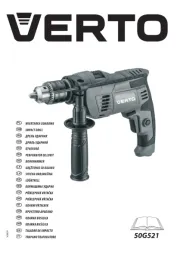
30 Juli 2025
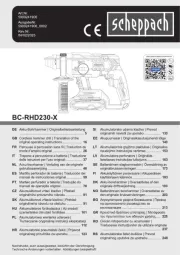
29 Juli 2025
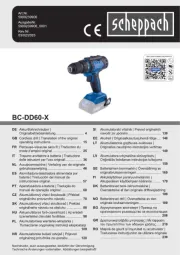
29 Juli 2025
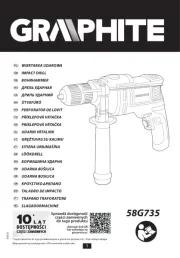
29 Juli 2025
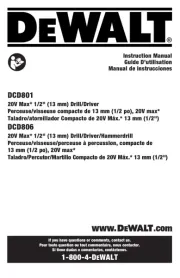
29 Juli 2025
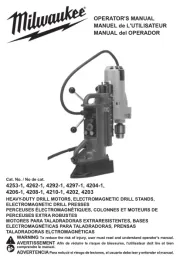
22 Juli 2025
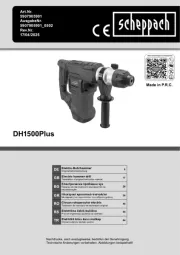
21 Juli 2025
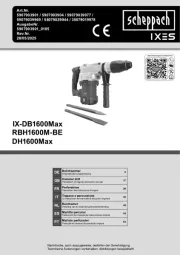
21 Juli 2025
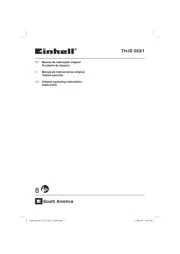
21 Juli 2025
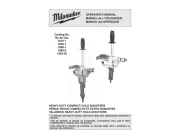
16 Juli 2025